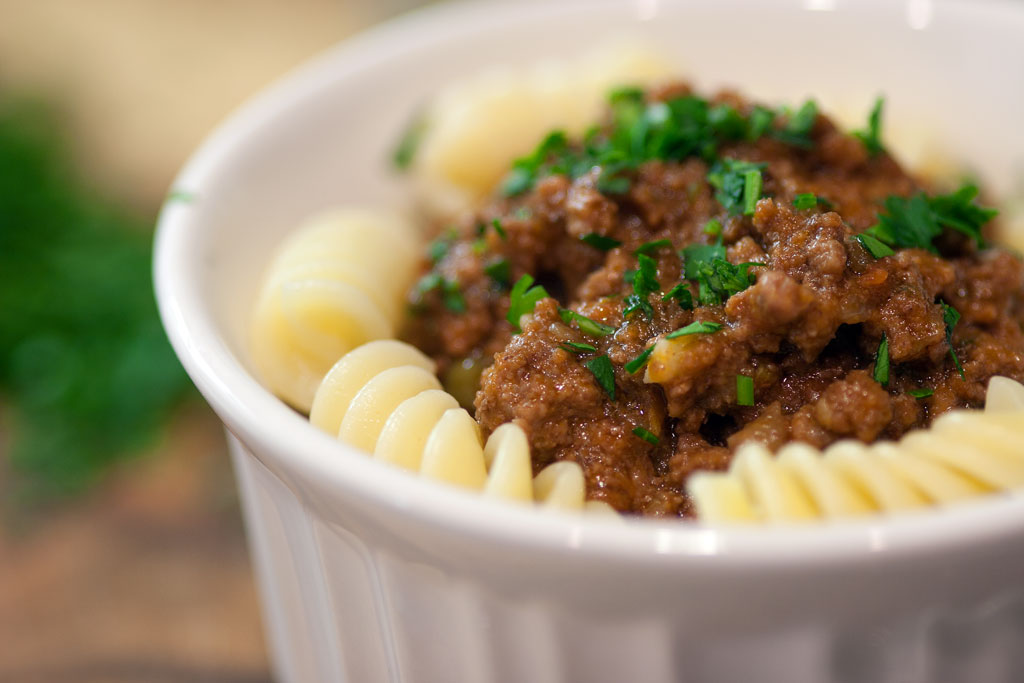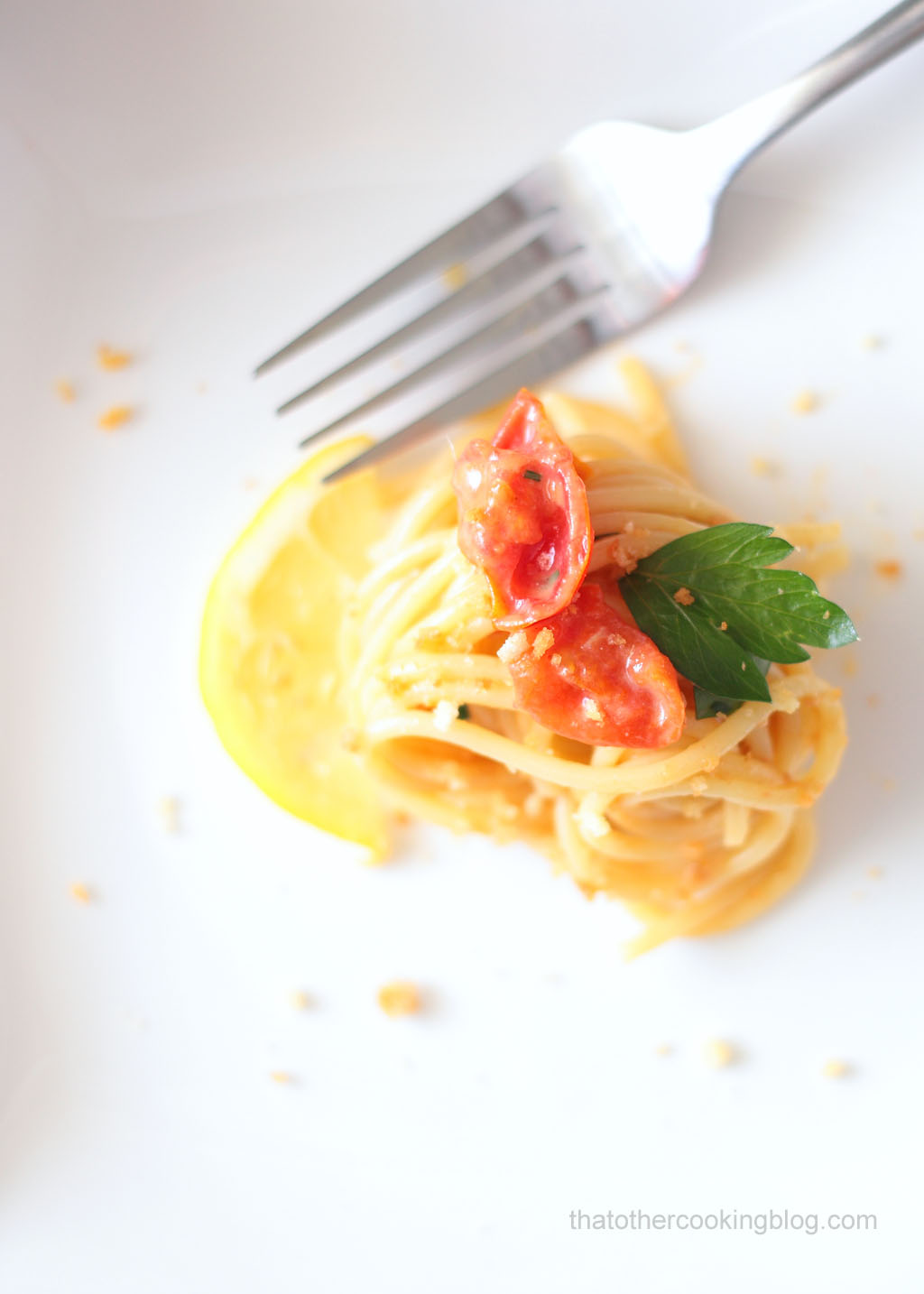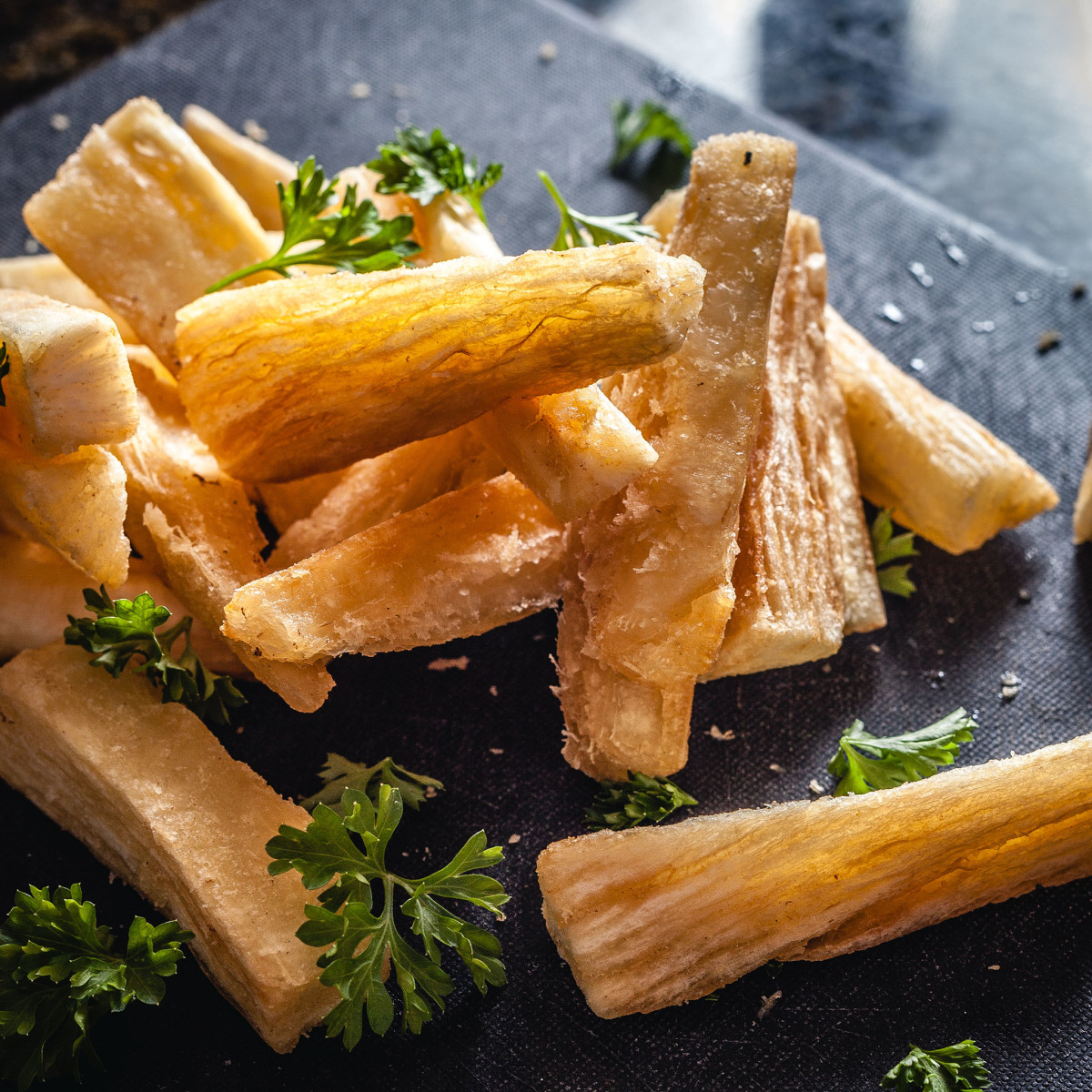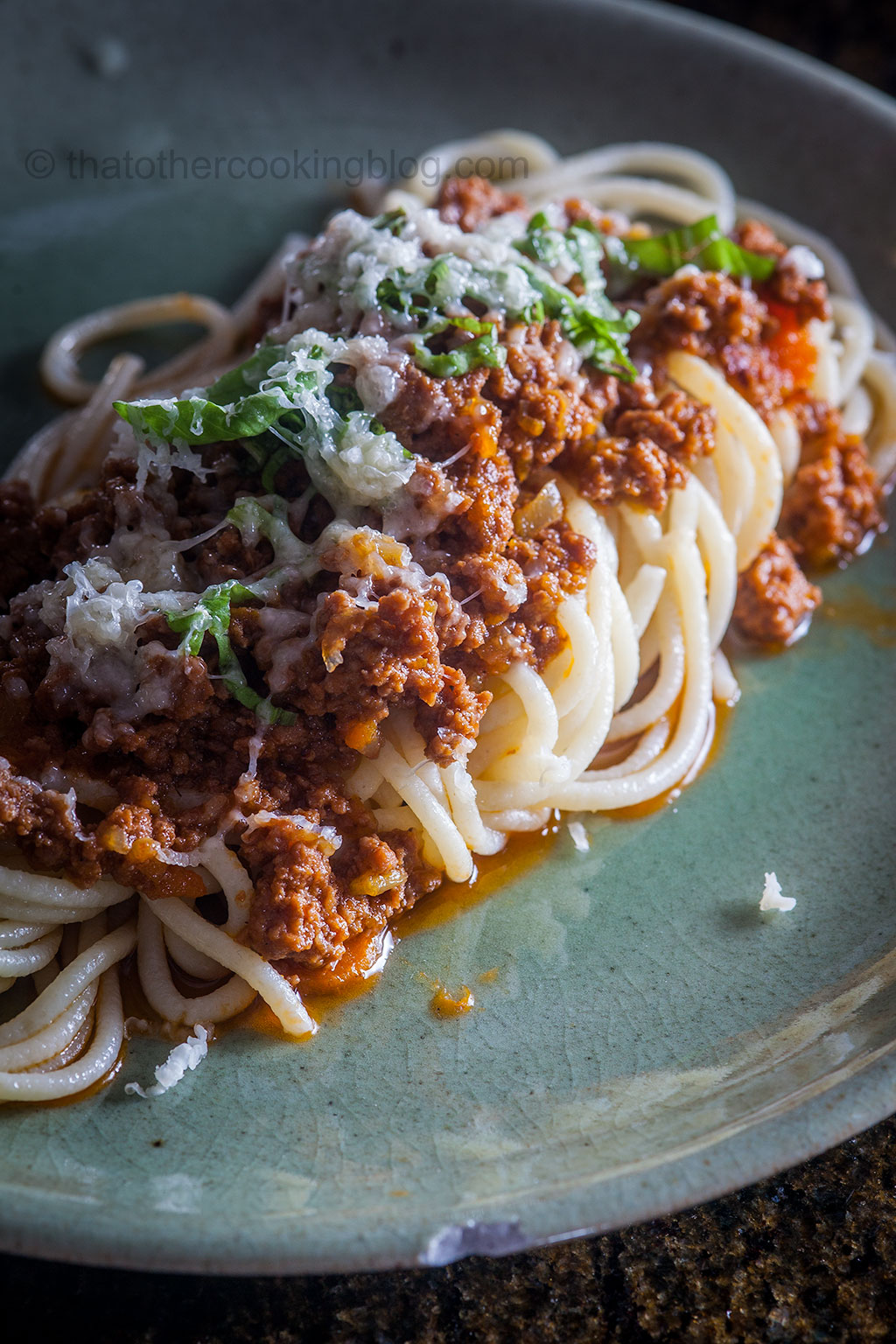Ok, I’m throwing away all the techie stuff (tonight…), just a pot, a knife and a cutting board. I love making Ragù, and I’ve been wanting to post about it for a while. So get the best ingredients you can, and remember that the most important thing to keep in mind is flavor development! but when isn’t this the case? hah! The caramelization at the bottom of the pot, all that browning on the surface of the ingredients is what gives this sauce its depth in both color and flavor. Season and deglaze as you go! Yumminess 101, let’ go!
Gear:
Cutting board
Knife
Your own glass of wine
Bowl
Pot
Peeler
One burner
Ingredients:
6 strips of bacon, cut into little cubes
2 pounds ground beef, quality beef. 15% fat
1 can (14oz or 400g) San Marzano chopped tomatoes
1 C or 250ml of cabernet sauvignon
1 medium white onion minced
2 small carrots minced
4-6 garlic cloves minced
1/2-2/3 C whole milk
2 fresh bay leaves
4-6 Basil leaves, chiffonade (Optional)
2-3 Tbsp extra virgin oil
S+P (Maldon or Kosher Salt)
Method:
01: Mince and cut all the ingredient as indicated.
02: Heat olive oil in a pot, don’t let it smoke.
03: Crisp up the bacon, stirring occasionally
04: Add ground beef, and brown, be patient. Add some salt.
05: Water will stop browning, reduce until gone.
06: Keep browning and stirring occasionally.
07: Add onion and carrots, let onions go translucent.
08: Add garlic, don’t let garlic go brown. That’s game over.
09: Add the canned tomatoes. Add some salt. Taste.
10: Allow them to caramelize, stirring occasionally.
11: Their color will deepen. Add some salt. Taste.
12: Add wine. Deglaze bottom. Cover pot slow simmer 2 hours.
13: Adjust water, dont let bottom burn. But reduce until saucy.
14: Microwave bay leaves in a coffee cup with water half way.
15: Add bay leave tea and bay leaves to sauce. Add basil.
16: Finish up and extract bay leaves. Adjust salt. taste.
17: Add some pepper to taste. Add Parsley. Add milk.
Note: Deglazing and Salting should be done as needed, I’ve only suggested it but it is better to adjust things as you go for every pot is different, every ingredient is different.
Ok, one last thing, and I’d kind of like to stress that blogging and sharing ideas is pretty awesome, my friend Stefan from stefangourment has provided a true italian translation of the Ragu Alla Bolognese found at the Accademia Italiana della Cucina:
The official “updated” recipe for Ragù Bolognese as deposited at the Bologna Chamber of Commerce on October 17, 1982 is as follows:
Ingredients:
300 grams (.67 lbs) coarsely ground beef
150 grams (.33 lbs) pancetta
50 grams (1.8 oz) carrots
50 grams (1.8 oz) celery
50 grams (1.8 oz) onion
300 grams (2 1/4 cup) tomato puree or pureed canned tomatoes
1/2 glass of dry white wine
1/2 glass of whole milk
a bit of meat stock
olive oil or butter
salt, pepper
1/2 glass of heavy cream (optional).
Preparation:
In a casserole, preferably of terracotta or thick aluminum and sized 20 cm/8 inch, render the fat from the pancetta that is first diced and then finely minced using a ‘mezzaluna’ knife. Add 3 Tbsp olive oil or 50 grams (3.5 Tbsp) of butter and the finely minced carrot, celery, and onion and sauté over low heat. Add the ground beef and mix well with a spoon, let brown until the meat ‘sizzles’. Deglaze with the wine and stir gently until it has evaporated completely. Add the tomatoes, cover and let simmer for about 2 hours, adding a bit of stock when needed. Towards the end add the milk to dim the acidity of the tomatoes. Adjust the seasoning with salt and pepper. At the end, when the ragù is ready, it is customary in Bologna to add cream when the ragù is served over dried pasta. For (fresh) tagliatelle no cream is used.
done.
Wanna get more sous-vide cooking guides and cool cooking how-to’s in your mailbox? You know what needs to be done!
We never spam. You should only be getting updates when new content is posted on the site. We also respect your privacy. We don’t share your email address with anyone and you can unsubscribe anytime!






10 comments
Sounds like a great ragù! Good technique: with all the browning you will get lots of Maillard.
If you want it to be more like made in Bologna, omit garlic and add celery and milk. You may also want to replace bacon with prosciutto or pancetta.
I’ll try omitting the garlic which might go against my religion but I’ll try.. I did add milk to mine which I omitted, so I’ll correct my recipe, celery, yes, i can totally add that, and I usually do, but didn’t see celery I liked at the store. Pancetta or bacon, some italians prefer american bacon over pancetta, i like both, pancetta but do agree, pancetta would make for a more traditional bolognese.
Your ragù is great, I was just pointing out how it could be more traditional. There is actually an official recipe that has been established in 1982:
http://www.accademiaitalianacucina.it/it/content/rag%C3%B9-alla-bolognese
I can translate it for you if you like 😉
hahaha! you should, i could paste your translation on my post and update! Have you read Heat by Bill Bufor?
Nope I don’t know that book. I have read similar books and heard similar stories though.
I loved it because of what I learned about Tuscan food, and the origins of pasta making, super interesting.
The official “updated” recipe for Ragù Bolognese as deposited at the Bologna Chamber of Commerce on October 17, 1982 is as follows.
Ingredients: 300 grams (.67 lbs) coarsely ground beef, 150 grams (.33 lbs) pancetta, 50 grams (1.8 oz) carrots, 50 grams (1.8 oz) celery, 50 grams (1.8 oz) onion, 300 grams (2 1/4 cup) tomato puree or pureed canned tomatoes, 1/2 glass of dry white wine, 1/2 glass of whole milk, a bit of meat stock, olive oil or butter, salt, pepper, 1/2 glass of heavy cream (optional).
Preparation: in a casserole, preferably of terracotta or thick aluminum and sized 20 cm/8 inch, render the fat from the pancetta that is first diced and then finely minced using a ‘mezzaluna’ knife. Add 3 Tbsp olive oil or 50 grams (3.5 Tbsp) of butter and the finely minced carrot, celery, and onion and sauté over low heat. Add the ground beef and mix well with a spoon, let brown until the meat ‘sizzles’. Deglaze with the wine and stir gently until it has evaporated completely. Add the tomatoes, cover and let simmer for about 2 hours, adding a bit of stock when needed. Towards the end add the milk to dim the acidity of the tomatoes. Adjust the seasoning with salt and pepper. At the end, when the ragù is ready, it is customary in Bologna to add cream when the ragù is served over dried pasta. For (fresh) tagliatelle no cream is used.
awesome, thank you! I’ll add this to my post!
You’re welcome, or: non c’è di che!
done btw.